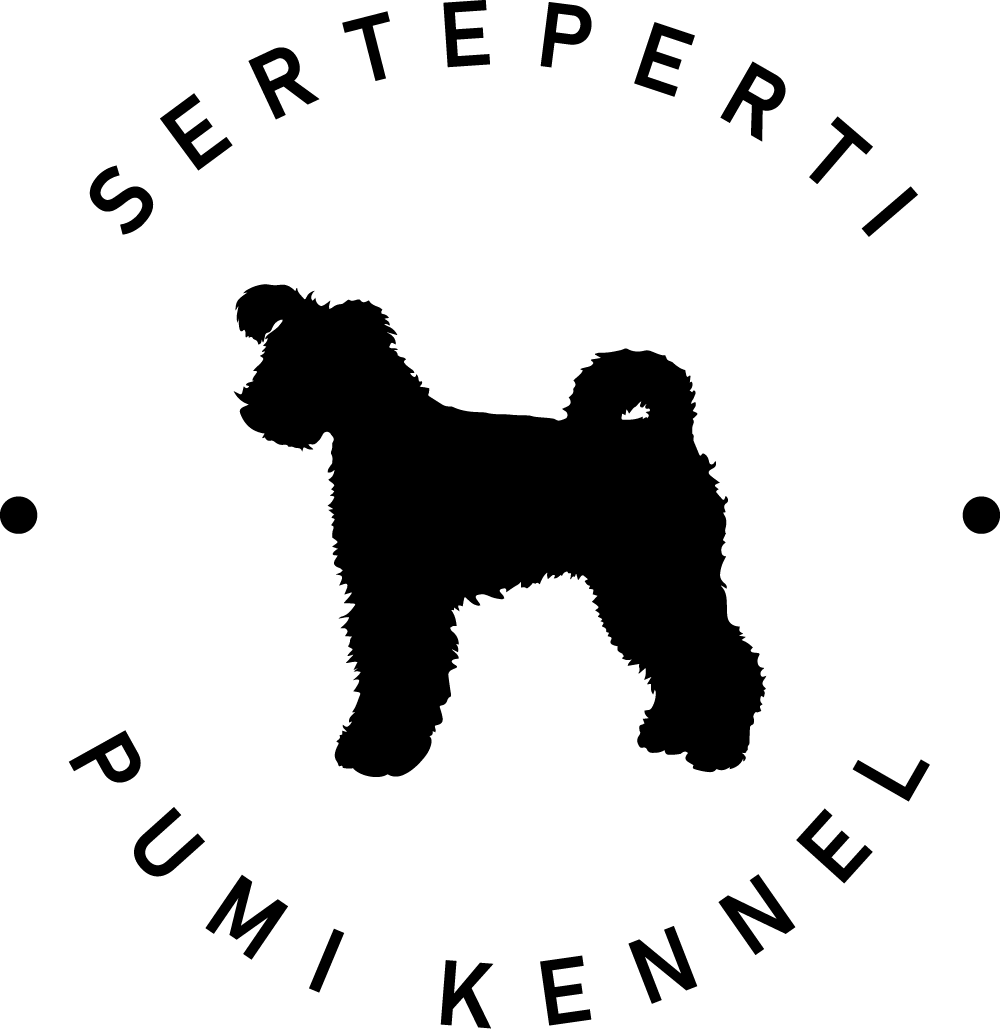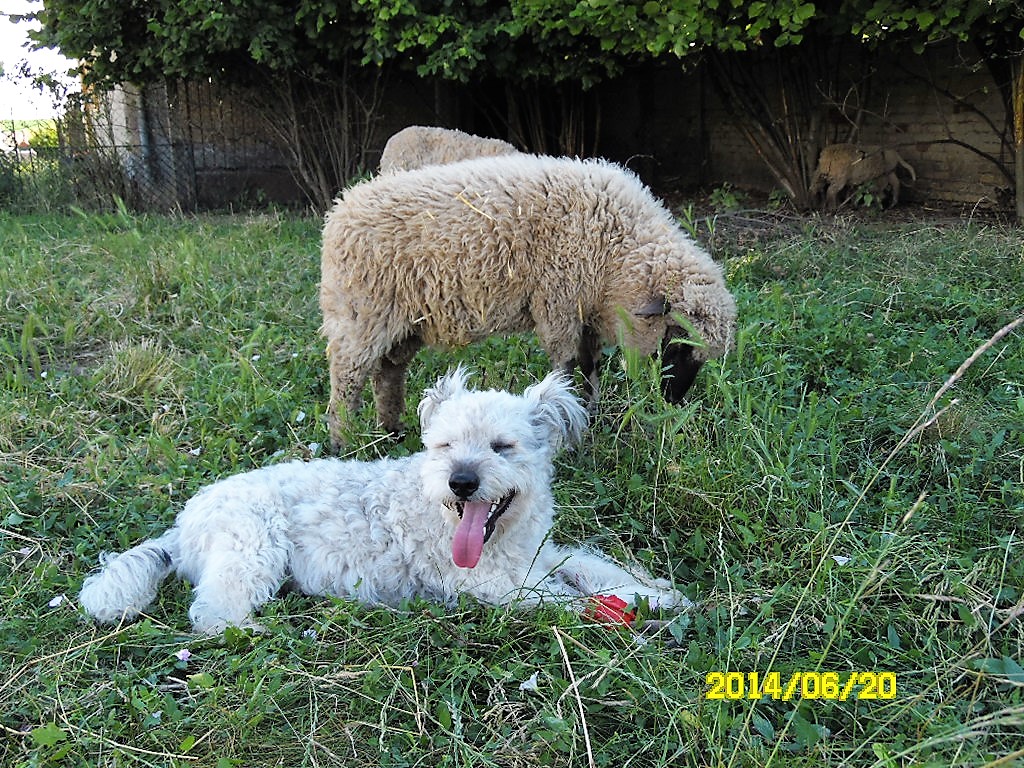The Hungarian Pumi’s history parallels that of the Hungarian Puli, at least up until Western sheepherding dogs and terriers, such as the French Briard and German Spitz, were brought to Hungary in the late 17th and early 18th centuries. These imports were crossed with the native Pulis. Eventually, those breedings produced a small, versatile and extremely smart herding dog with tremendous natural terrier-like drive and determination. This is the Pumi. The Pumi retained the heavy, virtually weather-proof outer coat of the Puli but lost its undercoat felting, and with that, lost its coat’s proclivity to form cords. Pumis originally were used as herders of livestock and hunters of rodents, both of which they did efficiently and effectively. They have always also been beloved companions to their owners.
The name “Pumi” reportedly first appeared in the early 19th century. However, the names “Pumi” and “Puli” were confused and used interchangeably well into the early part of the 20th century. A Hungarian dog breeder, Dr. Emil Raitsits, recognized the confusion in names and types of Hungarian herding dogs and set out to make clear breed definitions, distinctions and standards between the Hungarian sheepdogs. Through his own selective breeding program and those of others, Raitsits concluded that a number of fundamental differences existed between the older Puli and newer Pumi dogs. As a result of his work, the Pumi appeared as a variety of the Puli at a Hungarian dog show in 1920. In 1921, Raitsits proposed classifying the Pumi as a separate breed. By 1923, the Pumi appeared as an entirely separate breed from the Puli in the Hungarian show ring. This caused a number of changes to the development of each breed. While the Puli continued to grow in popularity as a fashionable companion dog, the Pumi became fine-tuned as a versatile working dog.
Both breeds still have many similarities and many differences. Pumis are basically sheep-herding terriers with medium-length coats; Pulis are long-haired sheep dogs. The Pumi remained popular in Hungary throughout the 1900s, both as a working dog and as a pet. The breed really started to gain international acceptance in 1966, when the international purebred dog registry, the Federation Cynologique Internacionale (FCI), officially recognized the breed. The Pumi’s exportation to Finland and Sweden in the 1970s and 1980s greatly enhanced its rising popularity. By the 1990s, the Pumi was established throughout Europe, as well as in the United States.
Pumis were recognized by the United Kennel Club (UKC) in January of 1996. They were admitted into the American Kennel Club’s Foundation Stock Service in 2001. The Hungarian Pumi Club of America (HPCA) was formed in 2005, to encourage and promote quality in the breeding of Pumis (the plural of Pumi is also referred to as “Pumik”), to do everything possible to bring their natural qualities to perfection, to protect and advance the interests of the breed, and to encourage sportsman-like competition at dog shows, companion events and performance events where the Pumi is present. Pumis moved into the AKC’s Miscellaneous Class in 2011, classified as part of the Herding Group.





